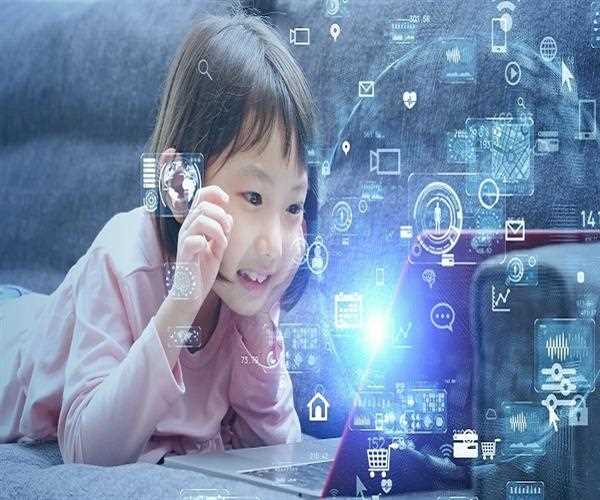Search here

08-May-2024 , Updated on 5/8/2024 2:17:20 AM
5 Ways AI in Education is Transforming the Industry
The implementation of Artificial Intelligence (AI), into various sectors, outcomes in big changes, and the education sector is not an exception. AI development is a new trend that significantly redefines the approaches and the provision of training and creates the possibility of new learning formats.
Such implications are big and wide, shaping education in many facets, including curriculum and student engagement as teachers would help in each process. Here are five ways AI is changing the education landscape:
1. Personalized Learning Experiences
The role of AI in education sector has been praised many times and it is its profound capacity to customize learning process in the light of individual specific needs. The scopes of AI-driven systems are going and pertain to investigation of the learning techniques and the performance of students, so that with that you can customize the educational resources and speed in accordance with the peculiarities of each individual. According to this faculty of the individual approach it is possible to close the knowledge gaps and may ensure that the learning process goes further and becomes more effective and exciting.
Shielding example, AI systems can supply add-ons for the topics where a student may struggle or faster pace for the topics, he/she grasps. This amount of individualization was almost improbable with a traditional teaching method in which it should have been nothing but one size for all.
2. Administrative tasks via automation
AI is also on account of reducing administrative tasks which otherwise take lots of time and educators can spend more time on teaching and less on paperwork. AI can automate work-related tasks like marking exams, processing student information, and curating a timetable. Not only does it speed up those activities, but also decreases human error. So, in this way, administrative education becomes more efficient, and there is less burden on it. AI systems in virtual classrooms handle all student inquiries concurrently and run them over 24/7 without putting any additional employees but reducing staffing costs.
3. Enhancing Content Delivery
Through AI, there is a ground-breaking change taking place in the digital educational content creation as well as how it is delivered and delivered. AI-enabled platforms enabling effective; automated processes of updating and generation of educational material, are real-time, making the content being taught current and relatable. Also, the usage of AI helps to create high-quality content in the form of virtual simulations and educational games that are full of amusing interactions and provide maximum efficiency and effectiveness in students' learning.
As an example, AI technology can help the students to learn things through discourse of historical findings and scientific phenomena which can be done virtually. While the students may experience what they are studying in the outer world, it may help them in understanding some complicated matters in a more comprehensible and implanted way.
4. 24/7 Learning Support
The introduction of AI-based chatbots and virtual adjuncts has been indispensable for learners to attain tailor-made tutelage and support when needed. AI assistants can take care of the homework, explain unclear material, as well as offer explanations in some of the hardest issues. AI tutor can do the same task as live tutor can.
Furthermore, representatives are on 24 hours, and this is particularly good for students in the world time zone or those who need urgent help after school. It not only assists in distance learning but also provides a flexible as well as more inclusive learning mode.
5. Bridging Educational Gaps
AI technologies are vital components of education non-exclusiveness. AI support programs, such as translation services, as well as learning technology applicable to different learning needs help overcome educational gaps due to language barriers and varied learning abilities. One of the potential applications of AI in the education industry is providing multilingual education, and the platforms adaptively develop toolkits to cater to students with disabilities, thus making education more inclusive.
Besides, AI assists in discovering the patterns and trends in education, which includes necessary steps for the policymakers and teachers to address systemic problems. One example is that if AI system detects that students from certain backgrounds always obtain low grades in a particular subject, then it can arouse further inquiry on the matter besides utilizing custom designed educational supports for this category of students.
Conclusion
Today, AI is no more a distant fantasy than a reality on the move, swiftly changing the notion of education. While AI is taking care of personalized learning and reducing the loads of teachers, it is becoming a facilitator of better learning conditions for the students and the teachers. Every year, technology becomes more sophisticated, and the role of AI cannot be left out.
In the end, this gives us a chance to invent even more profound developments in the field. By welcoming them into the fold, one can point out the net gains in learning that can be achieved by both the learners, the educators and the institutions focusing on providing education just through the use of AI.

Student
An MBA in finance imparts and improves management aptitude, inventive ability, critical thinking ability, and so forth. It offers a real-time experience that fabricates a staunch career foundation for students and working professionals. It helps them to thoroughly understand the financial sector.
Join Our Newsletter
Subscribe to our newsletter to receive emails about new views posts, releases and updates.
Copyright 2010 - 2025 MindStick Software Pvt. Ltd. All Rights Reserved Privacy Policy | Terms & Conditions | Cookie Policy